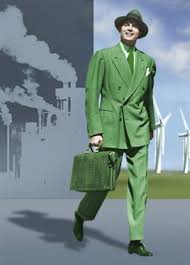
Everybody is familiar with the colorful distinction of the different employment sectors. White collar employment refers to salaried professionals and clerical workers. Blue collar employment involves manual labor. A third sector has emerged and is growing in both popularity and support: the green collar workers
The term was first heard in 1976 in the US Congress. Professor Patrick Hefferman produced the document: "Jobs for the environment - The coming of the green collar revolution, but it took off just until many years later in the US, as step by step it was becoming evident that poverty and pollution go together.
The Guardian, on 2008 published this: "Green collars have joined the employment wardrobe of blue collars, white collars and pink collars (so-called "female" jobs, such as care assistants or florists, and not white collars that were put in the wash with a rogue sock) and refer to manual-labour jobs in the new ecological economy, from mending bicycles to cladding buildings in solar panels. As much as a quarter of the US workforce could have a "green" job by 2030, says the American Solar Energy Society."
Green collar jobs certainly cover a wide range of sectors. In principle, green jobs are related to the cleaner and sustainable way of doing existing processes, hence practically there is no new green jobs as such.
According to Van Jones, a green collar job is a "family-supporting career-track job that directly contributes to preserving or enhancing the environmental quality". The three key principal for a green economy are: equal protection for all, equal opportunity for all and reverence for all creation.
Table source: A Renewable World

No comments:
Post a Comment